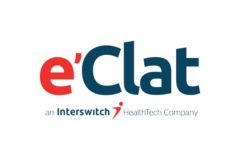This article was contributed to TechCabal by Andrew Garza. Garza is the COO/co-founder of Lifestores, a Nigerian healthtech company democratizing access to quality and affordable primary healthcare in Africa.
Nigerian and African healthtech has learned a lot about resilience in the last several years. With purchasing power dropping across the continent and VCs running short of ‘cheap money’, this year will no doubt hold more lessons. In 2023, healthtech service providers will have to acknowledge the dwindling numbers of healthcare professionals in Nigeria and across Africa in the country and thus optimize their business operations. New and exciting opportunities will also emerge at the intersection of healthtech and fintech, whereas the potential for exclusive and expensive solutions like telemedicine might not look as attractive as before.
Patient budgets will get even tighter and brain drain is not going to stop
The majority of Nigerian families have already felt the impact of inflation, which reached a 17-year high of 21% in September 2022. If an average household was already spending 80% of its monthly budget on necessities such as rent, food, and transport, disposable income will become an even scarcer resource in 2023. As out-of-pocket expenses account for close to 70% of the country’s healthcare market, the negative impact is likely to be immediate. This could be alleviated or aggravated by the new administration’s economic policies after the presidential elections. In other words, the need for affordable and safe treatment on the community level has never been as acute as it is today.
According to the Nigerian Medical Association (NMA), around 50 physicians leave Nigeria every week, resulting in a loss of approximately 2,500 of these professionals annually. The UK alone has seen over 6,000 doctors arrive from Nigeria since 2015. A similar trend is seen among pharmacists, who are also leaving Nigeria in large numbers. While Nigerian medical professionals earn a higher income in the UK and other countries, there have been multiple reports of them being coerced into working under conditions that can only be described as exploitative. Still, the weakening naira and earning opportunities abroad will most likely continue to drive the brain drain of medical professionals. This might lead to a significant share of pharmacies and hospitals, predominantly in already underserved areas, closing down in 2023.
B2B healthtech companies can alleviate many of the sector’s pains
The outlook for B2B healthtech applications seems relatively bright. As a result of the challenges both patients and healthcare providers are facing, B2B healthcare startups can be of much help to hospitals and pharmacies with their unit economics, boosting revenue and cutting costs. The ability to solve these crucial issues, in turn, helps B2B healthcare players – already the fastest-growing healthtech segment – scale quickly.
For example, Lifestores Healthcare’s OGApharmacy marketplace has grown 25% monthly, with a steady stream of healthcare providers looking to save money. Using the marketplace, hospitals and pharmacies can save 10-15% on the procurement of medication, including the most popular medications like paracetamol, anti-bacterials, antimalarials, and antihypertensives.
To help save costs, solutions like OGApharmacy can combine the procurement needs of hundreds of healthcare providers (HCPs), using these economies of scale to negotiate with leading importers and manufacturers for the lowest possible price. HCPs can also boost revenues through healthtech-provided ERP systems that offer point-of-sale, inventory management, and procurement functionalities.
Generally speaking, healthcare providers across the country will be hungry for solutions that minimize the administrative burden on doctors and pharmacists. Many providers will need to run smaller teams due to the exodus of medical professionals from the country, so the specialists onboard will need to dedicate most of their time to what they do best: treating patients. After all, this is what drives income. Healthtech companies that offer solutions in this domain are more likely to thrive than those who are perceived as providing non-essential services.
While the healthtech sector has a number of strong players operating in the B2C space, due to tightening purse strings, any offerings not targeted at helping patients save money will struggle to grow in 2023. Similarly, products targeting the upper middle class in terms of features and pricing will face a low ceiling for growth and barriers to broader market adoption. Unfortunately, while promising, the field of (unbundled) telemedicine seems likely to suffer.
A Fintech injection will be needed
There is nothing new about wholesalers serving as banks for hospitals and pharmacies, financing purchase orders and extending credit terms, and sometimes even providing an additional grace period for providers that struggle to pay back in time. This will likely still be the case in the nearest future, as bank credit, with double-digit yearly interest rates, is accessible only to few. It is likely that healthtech startups with a strong foundation in distribution will be adding embedded finance as a value-added service to provide a solution to the lack of working capital in the HCP sphere.
While the practice is beneficial for both parties, it comes with a fair amount of risk. Fintech solutions can help wholesalers calculate the credit score and risk profile of healthcare providers so they can price credit accordingly, but that’s just the basics. More sophisticated solutions can also provide healthcare providers with advice on how credit can be used to drive revenue.
Consolidation in healthtech, potential disruption in OTC medication distribution
Over the past two years, healthtech startups in Nigeria and elsewhere on the continent have had plentiful access to VC funding. And while Africa-focused VCs still have a lot of dry powder, investors’ standards have increased and their terms have tightened. Thus, there will be a growing divide between companies that are able to access funding and those that can’t, with the former buying out some of the latter. This trend will echo in the traditional healthcare sector, with, for example, growing hospital chains buying smaller outpatient centers. This consolidation will ultimately benefit the sector and the patients, with better-funded and more customer-focused leaders emerging from the recession.
One of the areas ripe for disruption is the distribution of over-the-counter drugs. Moves by some B2B ecommerce companies in Nigeria, including Sabi and OmniBiz, suggest they might start distributing OTC meds to informal retailers. The step looks logical, as the margins on medicines are higher than those on FMCGs, which still form the core of their business. Easy access to genuine medications will be highly beneficial to the entire sector and will likely encourage incumbent players to step up their game as well.
In 2023, healthcare services providers will face more challenges than before but also hopefully have more technological solutions at their disposal. While it is likely that the healthtech sector will have an uneven development, we can hope that the changing conditions will provide new opportunities to players in both B2B and B2C verticals. Will this lead to new unicorns on the market? Time will tell.




















